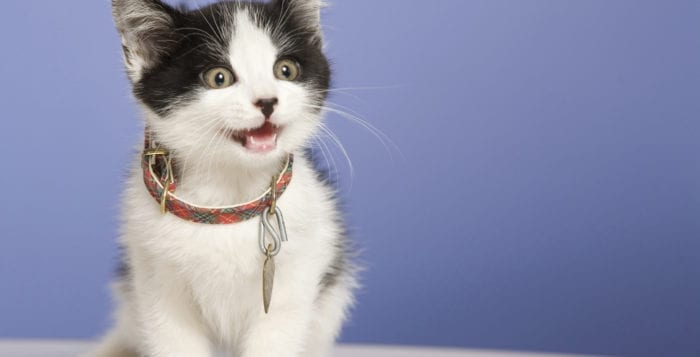Ask the Vet: Nasal discharge in cats
By Matthew Kearns, DVM
 I can’t even recall how many times a feline with a runny nose enters my clinic. A kitten is a little more straightforward as an infection is most likely the cause.But what happens when an adult cat presents? What if this cat is the only cat in the household? What if the cat never goes outside? This is when it gets interesting (and sometimes a touch frustrating).
I can’t even recall how many times a feline with a runny nose enters my clinic. A kitten is a little more straightforward as an infection is most likely the cause.But what happens when an adult cat presents? What if this cat is the only cat in the household? What if the cat never goes outside? This is when it gets interesting (and sometimes a touch frustrating).
The most common infection associated with a chronic upper respiratory infection is a combination of a herpes and calicivirus. Feline herpesvirus is similar to the human herpesvirus in that it never leaves the host and becomes active during times of stress and illness. The stress of pregnancy, labor and delivery causes the mother cat to start shedding virus.
The kittens are exposed to the virus either when passing through the birth canal or shortly after birth during grooming by the mother. If infected as a kitten, the cat can be predisposed to infections throughout its lifetime. Not only does the herpesvirus make the cat feel ill, but it also allows opportunistic bacterial infections to set in and then you have a real mess.
In addition, these cats shed the virus, increasing the risk of infecting other cats. Luckily, two of the components of the feline distemper vaccine (FVRCP vaccine) are a feline herpesvirus and feline calicivirus. The vaccine contains killed or weakened virus and is designed to stimulate the immune system without causing disease or illness. If your cat goes outside or is in contact with a cat that goes outside, make sure to see your veterinarian every year to update this vaccine.

Other causes of the feline upper respiratory syndrome include nasal foreign bodies (grass blades or other plant material), fungal infections (more common in cats adopted from the South or Southwest), tumors (benign polyps or cancer of the nasal passages), allergies or tooth root abscesses.
When a feline patient presents with symptoms of an upper respiratory problem the big question is, “how do we veterinarians determine what is causing the symptoms?” The character of the discharge (if there is one) holds significant clues. If the discharge is serous (clear and watery), it is more likely an allergy or early viral. If it is purulent (thick and green), it is more likely some sort of bacterial infection.
As briefly discussed earlier, a bacterial infection is usually secondary to some other primary disease process, which means that we need to keep searching for the primary cause. Sometimes we veterinarians can look in the mouth and actually see a rotten tooth or a mass/tumor, but many times it’s just not that easy. Blood work and X-rays help but are rarely diagnostic. X-rays are usually of other body cavities initially (such as the chest or abdominal cavities) because the skull and sinuses require anesthesia.
If the patient is anesthetized, we will usually look behind the soft palate with special instruments and mirrors and flush the sinuses with saline. This is also helpful but not always diagnostic.
A study at the University of Missouri Veterinary School reviewed the charts of cats with chronic nasal discharge. Results from this study revealed a diagnosis was only achieved 36 percent of the time. The University of Missouri Veterinary Health Center has not only the very best veterinarians available to them but also advanced diagnostics such as CT, MRI, rhinoscopy (a camera you can stick up the sinuses), biopsies etc. Ughhhh!!!
In conclusion, if your cat does develop signs of an upper respiratory infection, hopefully it resolves quickly with medication. If not, don’t get too frustrated with your veterinarian if an exact diagnosis is difficult to come by.
Dr. Kearns practices veterinary medicine from his Port Jefferson office and is pictured with his son Matthew and his dog Jasmine.







